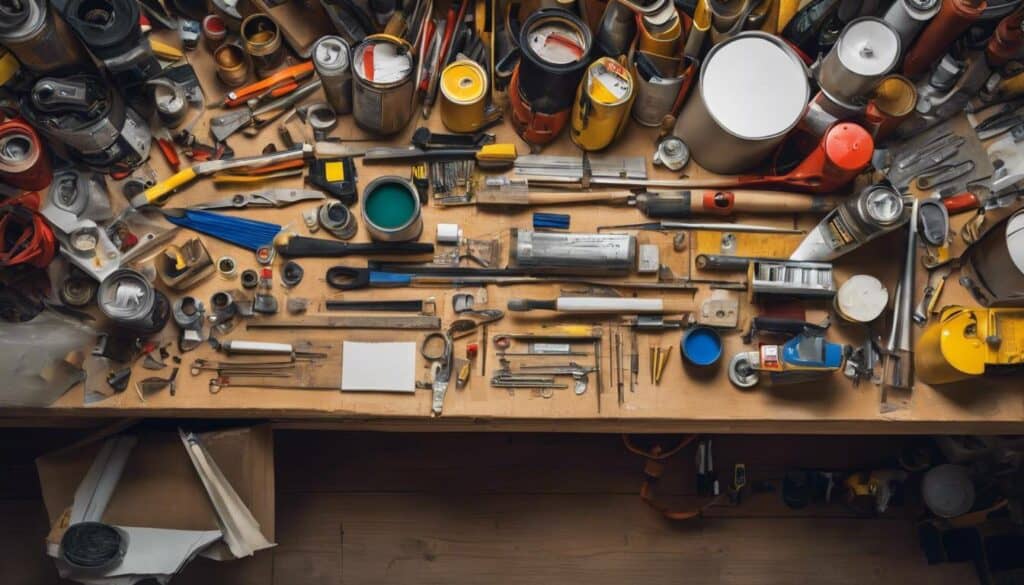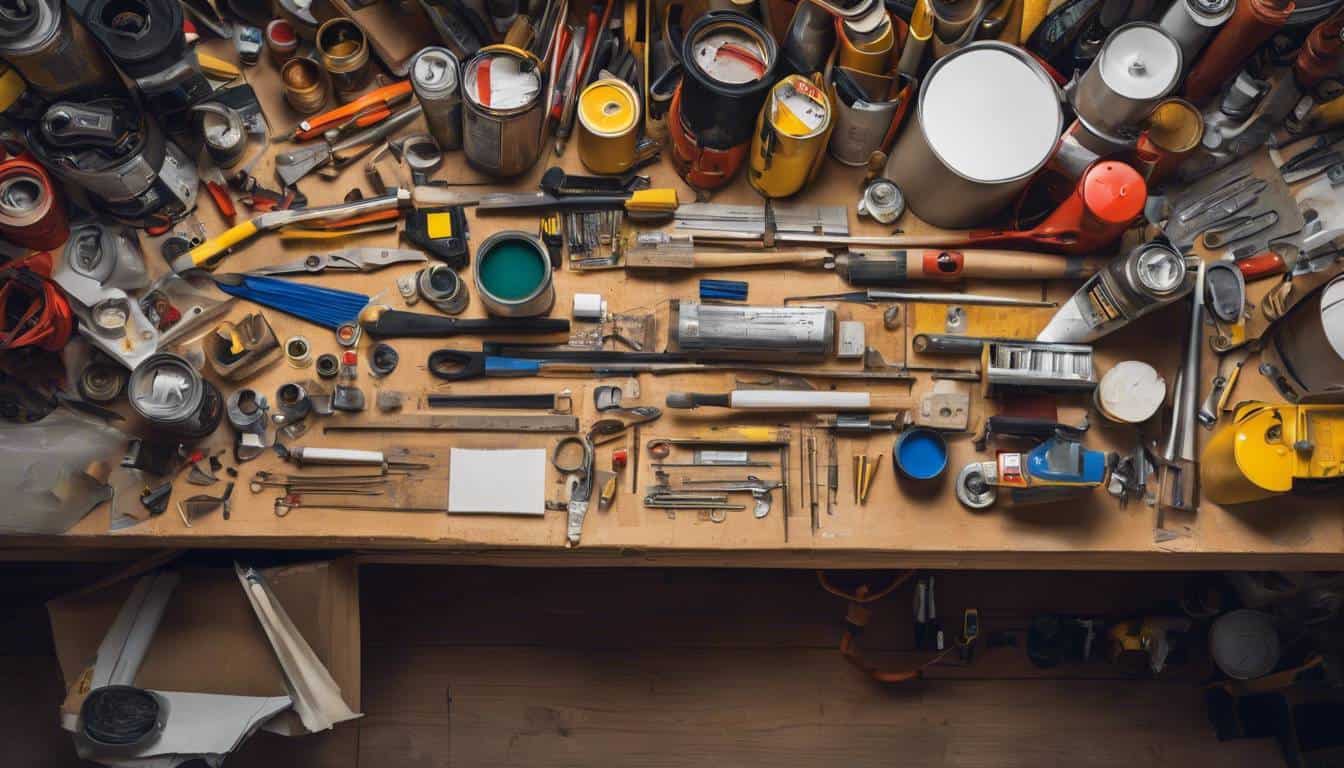Just when you think you can do it for cheaper… the hidden costs of DIY projects creep up. DIY projects almost always carry hidden costs that go beyond just the price tag of materials. Something as simple as a lack of proper tools or an unexpected snag in the project could demand further spending or lead to hiring professional help. Few realize that the true cost of a project isn’t merely financial; it’s also about time, patience, and effort spent. Remember, not every surprise is wrapped in bright paper and a shiny bow. Now, let’s settle down and talk DIY budgets…
Some hidden costs of DIY projects may include unexpected mistakes that lead to additional repairs, the need to purchase specialized tools, and potential fines for not obtaining necessary permits. It’s important to carefully consider these factors before embarking on a DIY project to avoid unexpected financial burdens.
Hidden Financial Impact of DIY Projects
It’s easy to get excited about starting a home improvement project on your own. The idea of saving money and having full creative control is incredibly tempting. However, there are often unforeseen costs lurking beneath the surface. Yes, DIY projects can definitely save money, but they also have the potential to disrupt your financial plans in ways you might not have anticipated.
Think about the tools involved in a DIY project; the specialized equipment you’ll need for tasks such as plumbing, electrical work, or woodworking. These tools can be expensive, and if you don’t already have them, it could add a hefty sum to your budget. Purchasing these tools upfront may seem like a good investment at first, but on closer examination, their usage may end up limited to this one specific project, making them a costly investment for a single use.
Furthermore, the cost of materials—often underestimated—can stack up quickly. For instance, if you’re remodeling a kitchen or bathroom, the expenses related to tiles, fixtures, and cabinetry can surpass initial estimates. It’s also important to consider that DIYers are more likely to make mistakes and may end up wasting materials in the process.
John decided to embark on a DIY bathroom renovation project. He was determined to save money by doing everything himself. But soon enough he realized that the cost of tiles, paint, and tools added up to something he hadn’t accounted for. Not only did he need specialized tools like tile cutters and grout floats, but he also underestimated the amount of tiles he would need for his space.
This leads us to an important truth: failing to anticipate all the necessary items from the beginning can result in extra trips to the hardware store and mounting costs that throw off your set budget.
Now let’s discuss another crucial hidden expense that DIY projects might bring with them—an area that often gets overlooked: time.
Moving forward, we’ll explore another significant challenge in DIY projects—addressing the shortage of necessary tools or materials.
The Ultimate Drawback: Lack of Tools or Materials
So, you’re ready to take on that home project – you’ve cleared your schedule, sketched out your plan, and visualized the end result. But as you start working, you soon realize something: You don’t have all the necessary tools. It’s a common mistake and can be quite frustrating.
Imagine needing a specialized tool for a specific task, only to find that it’s not in your toolbox. This scenario is more than just an inconvenience; it can lead to delays in completing the project and can potentially compromise the quality of your work. This need for specialized tools often arises in kitchen or bathroom renovations, where tile cutters, power saws, or sanders may be necessary. The cost of purchasing or renting these tools can quickly add up, impacting the overall budget of the project.
For instance, imagine starting a kitchen renovation and being unable to complete it due to not having a specialized tile cutter. In such a situation, purchasing or renting the tool becomes unavoidable, adding unexpected costs to your project.
Now let’s turn our attention to materials – another crucial aspect of any DIY endeavor. Underestimating the quantity of materials needed can lead to multiple trips to the store and additional expenses. Not to mention, choosing the wrong type of materials can also result in costly replacements.
When it comes to materials, consistency is key – from paint to flooring to lumber. Each material must complement the others in terms of quality and aesthetic appeal. Mistakes here can result in significant time and money spent on rectifying them.
Here are a few considerations:
- Choosing subpar materials might save money initially but could lead to expensive repairs or replacements down the line.
- Overbuying materials can also strain your budget over time, especially if they cannot be returned or used for other projects.
In summary, acquiring the right tools and materials is integral to the successful completion of any DIY project. The failure to do so not only affects your budget but also holds the potential for compromising the overall quality and longevity of your home improvement endeavors.
As we unravel the intricacies of DIY projects, we’ll now explore how inexperience and safety issues pose their own challenges and costs.
Inexperience, Safety Issues and Their Cost
When we take on a DIY project, we are often trying something we’ve never done before, whether changing a light fixture or installing new cabinets. Being adventurous and trying new things is commendable, but it’s crucial to remember that when you’re inexperienced, safety hazards and potential damage become real concerns.
Simply put, when we don’t know what we’re doing, there is a higher risk of making mistakes that can lead to injuries or accidents. For example, using power tools without proper knowledge or disregarding safety precautions could result in severe injuries. A trip to the emergency room for a DIY-related injury can cost anywhere from $2,000 to $5,000 in medical expenses, not to mention the impact it has on your health and well-being.
Consider the case of Jane, who decided to repaint her bedroom by herself without any prior experience. While reaching out to paint the ceiling, she stood on an unstable chair which tipped over, causing her to fall and break her arm. This scenario underscores the importance of safety in home improvement projects, especially for inexperienced DIYers. The subsequent medical bills and missed work due to the injury ended up costing her far more than it would have if she had hired a professional painter in the first place.
Furthermore, inexperience can lead to errors that might not be immediately noticeable but could lead to costly repairs down the line. For instance, incorrectly installed plumbing fixtures may result in water damage, while improperly executed electrical work can pose serious fire hazards requiring expensive fixes.
One important thing to keep in mind is that safety comes first when undertaking any project. It’s better to take time understanding the right techniques or investing in some basic training instead of risking one’s safety or property due to lack of knowledge.
In summary, lacking experience can lead to potentially dangerous situations and expensive consequences. Being aware of these potential risks should prompt us to carefully consider whether a task is within our capabilities or if professional help is warranted.
Understanding the true costs and risks associated with DIY projects lays the groundwork for making informed decisions about managing your home improvement endeavors. Now let’s turn our attention to the often underestimated elements of extra time and resources involved in DIY projects.
Extra Time and Resources: Undervalued Factors
When taking on a DIY project, many people underestimate the amount of time and resources needed. Let’s delve into these undervalued factors further.
Time
DIY projects can be incredibly time-consuming. What might initially appear as a weekend project can quickly spiral into a multi-week ordeal. This prolonged timeframe not only adds to the stress of completing the project but can lead to significant time off work, resulting in a loss of wages. It’s crucial to realistically evaluate the time commitment required for any DIY project and account for potential delays that may arise.
Planning and preparation are key – take the time to accurately assess how long each aspect of the project will take. Factor in unexpected setbacks or additional tasks that may arise as you progress. By being mindful of the time investment early on, you can avoid finding yourself rushing through the project or having to take unplanned days off work which could affect your income.
It’s important to consider what other commitments might be affected by dedicating extensive periods to completing a DIY project. Setting realistic time expectations is not just about finishing within a specific deadline, but also about preserving balance in your personal and professional life.
Pro tip: Don’t forget to think about any upcoming events or responsibilities that could be impacted by the time you need to dedicate to your DIY project. Sometimes sacrificing a little bit of efficiency early on can prevent more significant disruptions later.
Labor
While DIY often implies “do it yourself,” there are instances where additional labor is necessary. Tasks that require multiple people, such as lifting heavy materials or completing intricate work, may result in the need to hire extra help. This not only increases the complexity of the project but further inflates its costs.
Imagine renovating a room where moving furniture, demolishing walls, or carrying heavy building materials is involved. The physical demands of certain DIY projects may require expertise or assistance beyond what one person can provide, leading to the requirement of additional labor.
Considering all aspects upfront – including whether you’ll need assistance with specific stages of the project – is crucial for effective planning and budgeting.
One effective approach is to ask for advice from experienced professionals or individuals who have completed similar projects. They can provide valuable insights into potential labor requirements, enabling you to better anticipate and prepare for these aspects of your DIY endeavor.
Understanding the true investment of time and labor required for a DIY project is essential in making informed decisions about whether taking on the challenge yourself is viable. Taking an honest look at these undervalued factors can save you from unforeseen setbacks and ensure a smoother overall experience during your home improvement journey.
In the next section, we’ll explore strategies and insights on how to dodge these hidden costs commonly associated with DIY projects.
Guide to Dodging Hidden DIY Costs
Guide to Dodging Hidden DIY Costs
When undertaking any DIY project, proper planning is key. While it might seem obvious, many people underestimate the time and effort required for successful completion. This includes creating a detailed budget that not only accounts for the cost of materials and tools, but also considers the valuable time involved. Every hour spent on a project is an hour less for other activities.
For example, let’s consider a kitchen renovation. You budgeted for all the materials, but have you factored in the time it will take? DIY projects can be a drain on free time, potentially taking double the time it would take a professional, resulting in lost wages or missed opportunities to make money elsewhere. So when budgeting, factor in that hidden cost of your time.
Research and Education
Thorough research goes hand in hand with planning. Invest ample time in researching the necessary tools, materials, and processes required before embarking on a DIY project, whether it’s laying out tiles or fixing electrical wiring.
Consider this: if you plan to repaint your walls, research the type of paint and primer needed for the job. Overlooking this step and choosing the wrong paint or skipping necessary preparation steps might lead to redoing the entire project, resulting in unnecessary costs and extended timeframe.
Thinking through every detail beforehand can save you lots of trouble down the road.
Understanding these hidden costs can help you navigate through your DIY ventures more effectively. Now let’s shift our focus to gaining a balanced view of DIY projects—weighing both their advantages and potential drawbacks.
Final Thoughts: Balanced View of DIY Projects
Embarking on a do-it-yourself project can be a remarkable journey filled with personal satisfaction and the joy of creating something with your own hands. Furthermore, it offers the chance to save money and acquire new skills that may prove valuable in various aspects of life. However, it’s essential to approach such endeavors with careful consideration and realistic expectations.
While it’s easy to get swept away by the allure of saving money and the satisfaction of completing a project on your own, it’s crucial to recognize overlooked hidden costs. Time and effort are often undervalued in DIY projects. They can be time-consuming, requiring considerable research, planning, and execution—resources that may take away from other responsibilities or leisure activities.
It’s worth reflecting on whether the time invested in a DIY project could have been better spent elsewhere — whether on personal pursuits, professional endeavors, or quality time with loved ones. A common misconception is that undertaking a task personally is always more cost-effective than hiring a professional. While this might be true in some cases, it’s crucial to weigh the value of your time against the potential savings.
Consider the concept of opportunity cost: What is your time worth? Could you use that time to earn more money doing something else? For instance, if it takes you two weeks to remodel your kitchen, could you have used that time to work and earned enough to cover the cost of hiring a professional?
Think about it like this: Imagine you are diligently putting together a complex piece of furniture from scratch. It takes hours and hours of labor, patience, and effort, but eventually, you complete it successfully. Now ask yourself – would paying for delivery and assembly services have been a more efficient use of your time?
Understanding the value of your time will help you make informed decisions about when it’s best to tackle a project on your own and when it makes more sense to hire help. It’s vital to find a balance between saving money and respecting the value of your time and abilities.
In essence, while DIY projects can bring immense satisfaction and financial savings, they also demand careful consideration of all associated costs. By staying mindful of hidden expenses and understanding the true investment of time required, individuals can approach DIY projects with a balanced perspective that aligns with their lifestyle and priorities.






